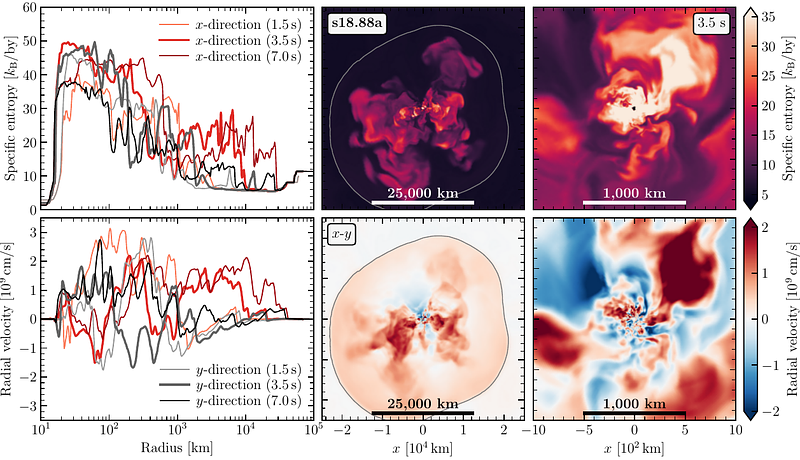Long-Term Multidimensional Models of Core-Collapse Supernovae: Progress and Challenges

Long-Term Multidimensional Models of Core-Collapse Supernovae: Progress and Challenges
H. -Thomas Janka MPI Astrophysics, Garching
AbstractSelf-consistent, multidimensional core-collapse supernova (SN) simulations, especially in 3D, have achieved tremendous progress over the past 10 years. They are now able to follow the entire evolution from core collapse through bounce, neutrino-triggered shock revival, shock breakout at the stellar surface to the electromagnetic SN outburst and the subsequent SN remnant phase. Thus they provide general support for the neutrino-driven explosion mechanism by reproducing observed SN energies, neutron-star (NS) kicks, and diagnostically relevant radioactive isotope yields; they allow to predict neutrino and gravitational-wave signals for many seconds of proto-NS cooling; they confirm correlations between explosion and progenitor or remnant properties already expected from previous spherically symmetric (1D) and 2D models; and they carve out various scenarios for stellar-mass black-hole (BH) formation. Despite these successes it is currently unclear which stars explode or form BHs, because different modeling approaches disagree and suggest the possible importance of the 3D nature of the progenitors and of magnetic fields. The role of neutrino flavor conversion in SN cores still needs to be better understood, the nuclear equation of state including potential phase transitions implies major uncertainties, the SN 1987A neutrino measurements raise new puzzles, and tracing a possible correlation of NS spins and kicks requires still more refined SN simulations.